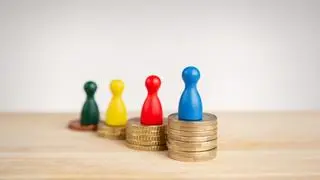India has attained almost 100 per cent access to clean cooking fuel and electricity supply.
This mammoth achievement is on the back of a conscious push towards boosting and democratising energy access, which has been on the Centre’s agenda for a while.
The BJP-led government claims most credit for this exercise as it has practically doubled the number of LPG, or cooking gas, consumers in the country since 2014.
This increase was driven by deposit-free LPG connections for the poorest in the country through the Pradhan Mantri Ujjwala Yojana (PMUY). Till date, over eight crore new LPG consumers have been created through this programme.
The deposit-free connections form the largest chunk of new additions since 2014. It is estimated that there were 14.8 crore LPG consumers in 2014; today these numbers have swelled to nearly 28 crore. According to official estimates, LPG penetration has now reached 98 per cent of Indian households.
A more modest but equally significant progress has been reported in the electrification of villages and, subsequently, households.

Power for all
Over 19,000 villages have been electrified under the Deen Dayal Upadhyaya Gram Jyoti Yojana (DDUGJY) since its launch in 2015.
This is minuscule in comparison to the over 6.5 lakh villages that were already electrified in the country then.
At its core, the DDUGJY is considered a rechristened Rajiv Gandhi Gram Jyoti Yojana (RGGJY), a similar programme run by the UPA governments before 2014. The present dispensation claims it had to go the extra mile to connect some remote villages as the previous governments went after the low-hanging fruit.
While most electrification is complete, the government still identifies some villages (the number varies) as un-electrified and work-in-progress because of access issues.
But the second leg of the electrification programme, the Pradhan Mantri Sahaj Bijli Har Ghar Yojana - Saubhagya was the much-needed extra mile. Some 2.8 crore households have been electrified under the programme since its launch in October 2017.
These were added to the existing 21.3 crore electrified households present in the country, taking the total number of homes with electricity access closer to 25 crore.
Metered connections
Interestingly, not all of these Saubhagya homes were seeing electricity for the first time. According to officials tracking the progress of these schemes, the numbers include some who were using illegal electricity connections which are now metered.
This also explains the noticeable difference between the near 100 per cent access claims in the flagship schemes and the numbers on the ground.








Comments
Comments have to be in English, and in full sentences. They cannot be abusive or personal. Please abide by our community guidelines for posting your comments.
We have migrated to a new commenting platform. If you are already a registered user of TheHindu Businessline and logged in, you may continue to engage with our articles. If you do not have an account please register and login to post comments. Users can access their older comments by logging into their accounts on Vuukle.